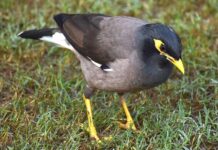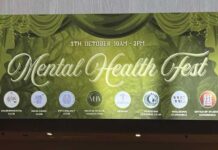By Shaikha Alshamsi
SHARJAH, UAE – Wasit Wetland Centre in Sharjah welcomed over 400 species of birds from Africa, Asia and Europe this year.
The wetland provides the birds with a natural habitat while educating visitors on biodiversity.
Tourist Guide, Jawahir Alkoas, said that this area was selected to attract millions of birds that have faced problems with the environmental conditions in their home countries, giving them shelter.
“Our main goal is to ensure their survival for the coming generations,” Alkoas said.
The Centre is home to 350 species of birds that live near the wetlands or are migratory birds to the area while the other 60 birds are housed permanently in the visitor centre. These include several rare birds such as the Northern Bald Ibis, Glossy Ibis, Grey Heron, Marbled duck, which is also known as one of the threatened species, Purple Swamphen and the Pink-backed Pelican.
Alkoas said that these birds have different kinds of breeding habitats, beaks and feeding methods that are explained to each visitor in the Centre. The agile Purple Swamphen is one of the few local birds that uses its feet to eat by picking up food and lifting it to its beak or carrying it to a more comfortable spot.
It also uses its beak to pull out plants or remove leaves and soft stems. The Purple Swamphen can eat on the shoreline, in shallow water and on floating plants. It mainly reproduces in fresh or salty areas, open water, marshes, swamps, rivers and floodplains.
Alkoas added that many of the birds that stop off at the Wasit Wetland Centre stay longer than expected.
“This place is designed to be rich in food and safe for birds to allow them to breed away from their own predators,” she said.
She said that in collaboration with the Wasit Nature Reserve, they have brought bird watchers from around the world to take care of them on a regular basis. Some of these bird watchers are a part of a veterinary team that perform medical, therapeutic and nutritional tasks and make sure each bird gets its proper food.
WWC also provides a medical file for every bird, including its case, diseases and a list of its daily food.
Manager of the Centre, Aisha Al Midfa, said that the secret of this place comes from its preserved water and lakes that were once common along the western coastal plains of the United Arab Emirates.
These underground water springs usually come from Hatta through the falaj system to supply water to the crops.
Al Midfa added that when it rains in those areas, the water springs bring food such as killifish and other types of food for all kinds of birds.
She said that they have discovered this before building the Centre as it was a sanctuary for birds, which became a dumping ground in the 1970s.
The Sharjah Government with the help of the Environment and Protected Areas Authority found the first bird known as the Black-wing Stilt feeding on the wetland and decided to turn it into a reserve in 2005.
Two years later, as the flora and fauna began to grow again, the area was renamed as Wasit Nature Reserve.
“The area now plays a big role in producing oxygen and restoring the indigenous ecosystem, which we were in fear of losing,” she said.
Al Midfa said that the architecture of the place is fundamental to the success of this project.
“Every part of the structure works in harmony with the environment it serves, often enhancing it,” she said.
Al Midfa added that the roof of the building is at ground level, so it does not become obtrusive to the birds. The manager said that the floor is below the ground level, which means that the birds cannot see any human movement through the building.
The glass walls are also titled towards the ground. “This is very important for the birds as they often fly into glass buildings, mistaking the sky’s reflection for the sky itself,” Al Midfa said.
There are eight bird hides made from wood and recycled plastic that can help visitors observe the birds from a distance and prevent environmental intrusion. The noise has also been reduced due to the vegetation surrounding the site.
“Everything was built with the birds in mind,” Al Midfa said.
The manager added that the Centre uses environmentally friendly vehicles in which visitors can go on tours to learn about the reserve and the birds that live there.
“Through this education, I really believe that people can change for the better and stop certain habits and destructive behaviors to move forward in the way we live in this world,” she said.
The area was built and designed by the Dubai X-Architects company. It opens from 9 a.m. to 6:30 p.m. except for Tuesday, which is a maintenance day. On Friday, it welcomes visitors from 2 p.m. to 6:30 p.m. and on Saturday, from 11 a.m. to 6:30 p.m.



















